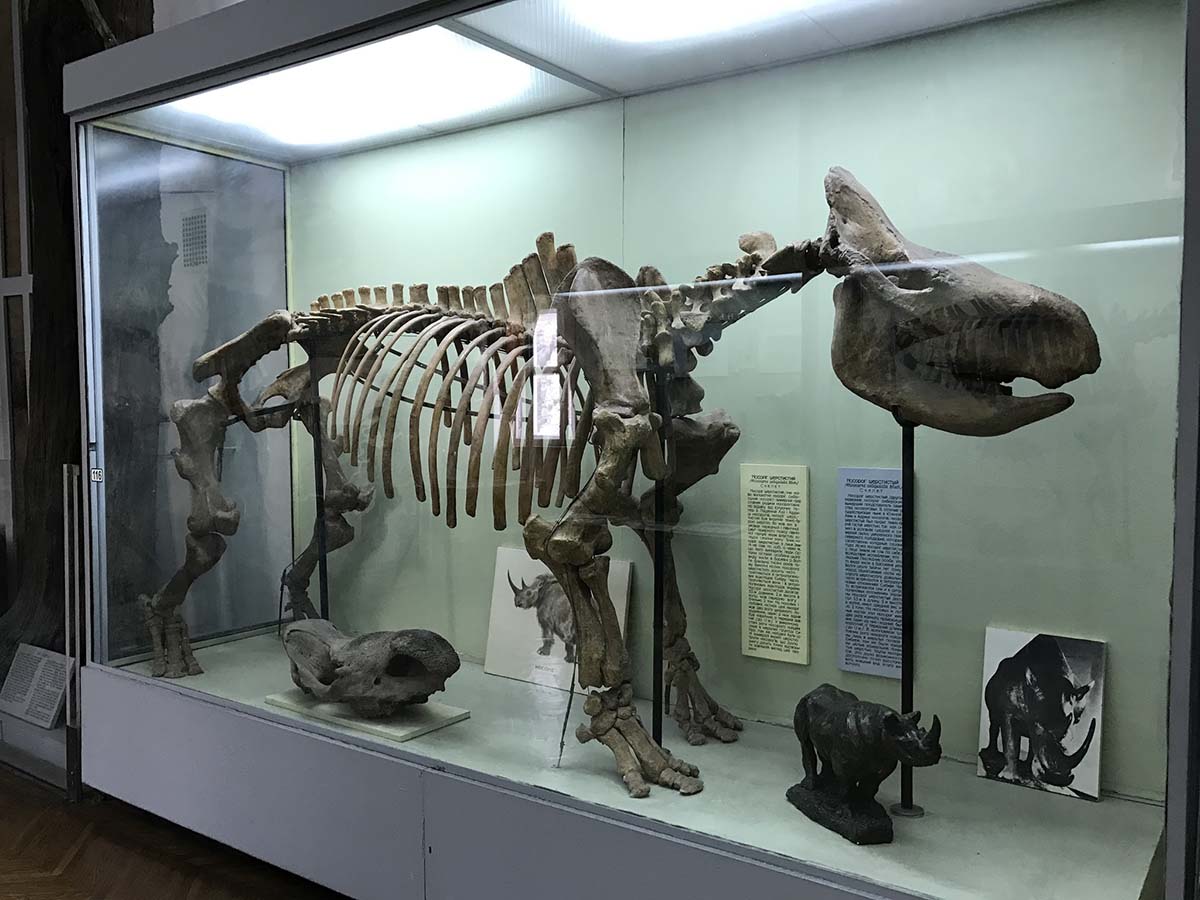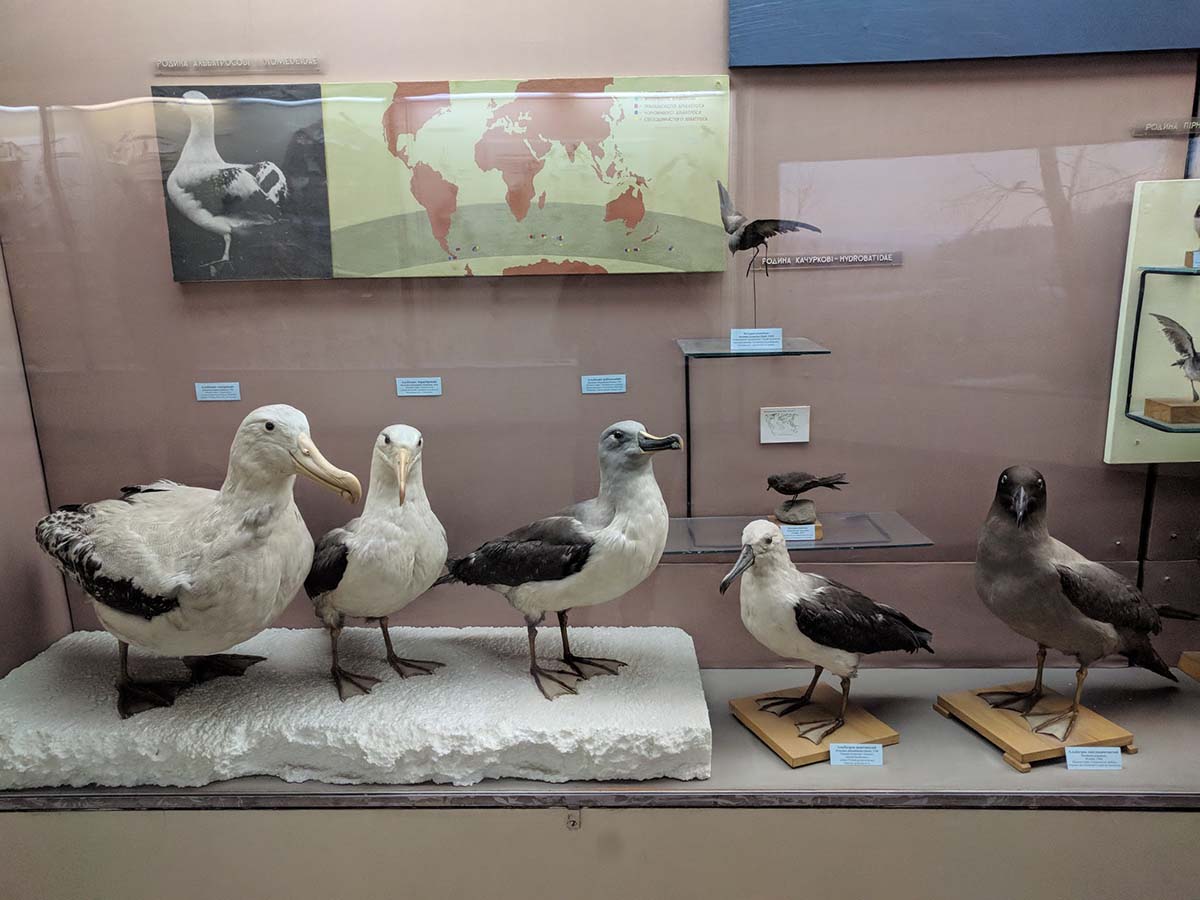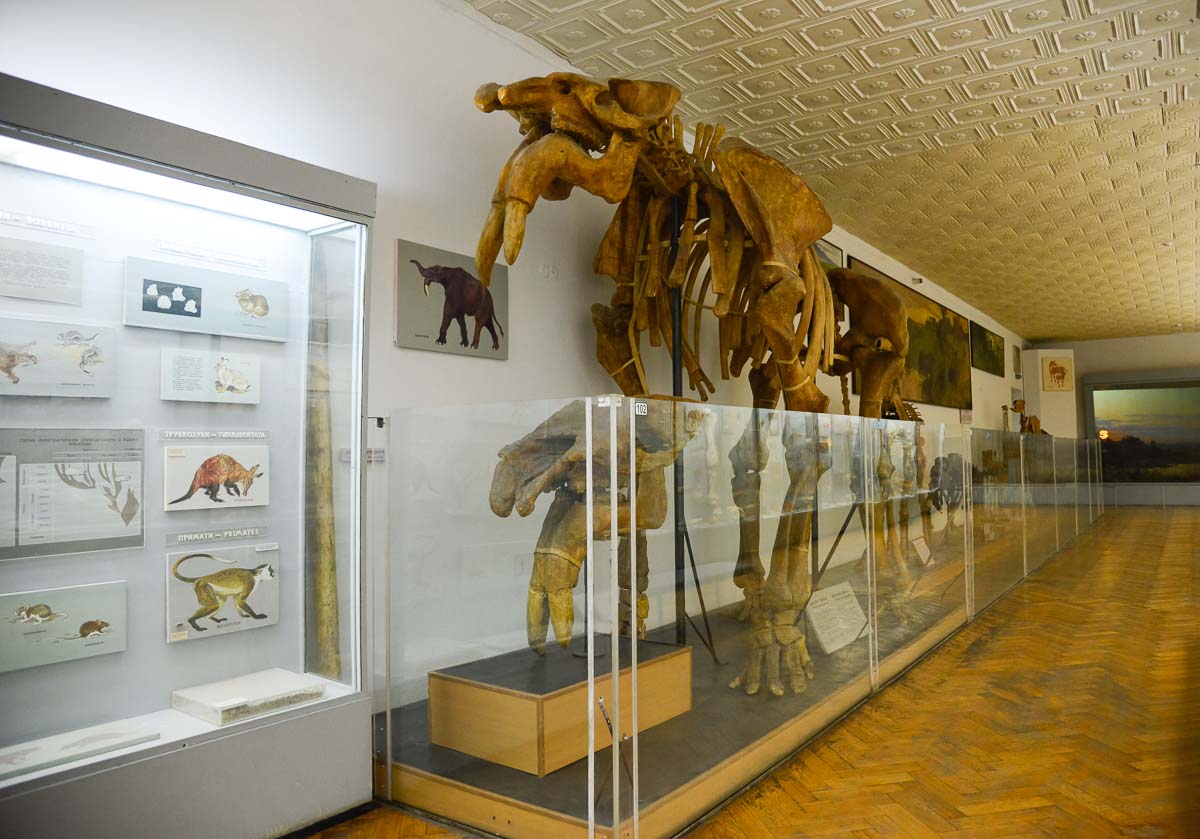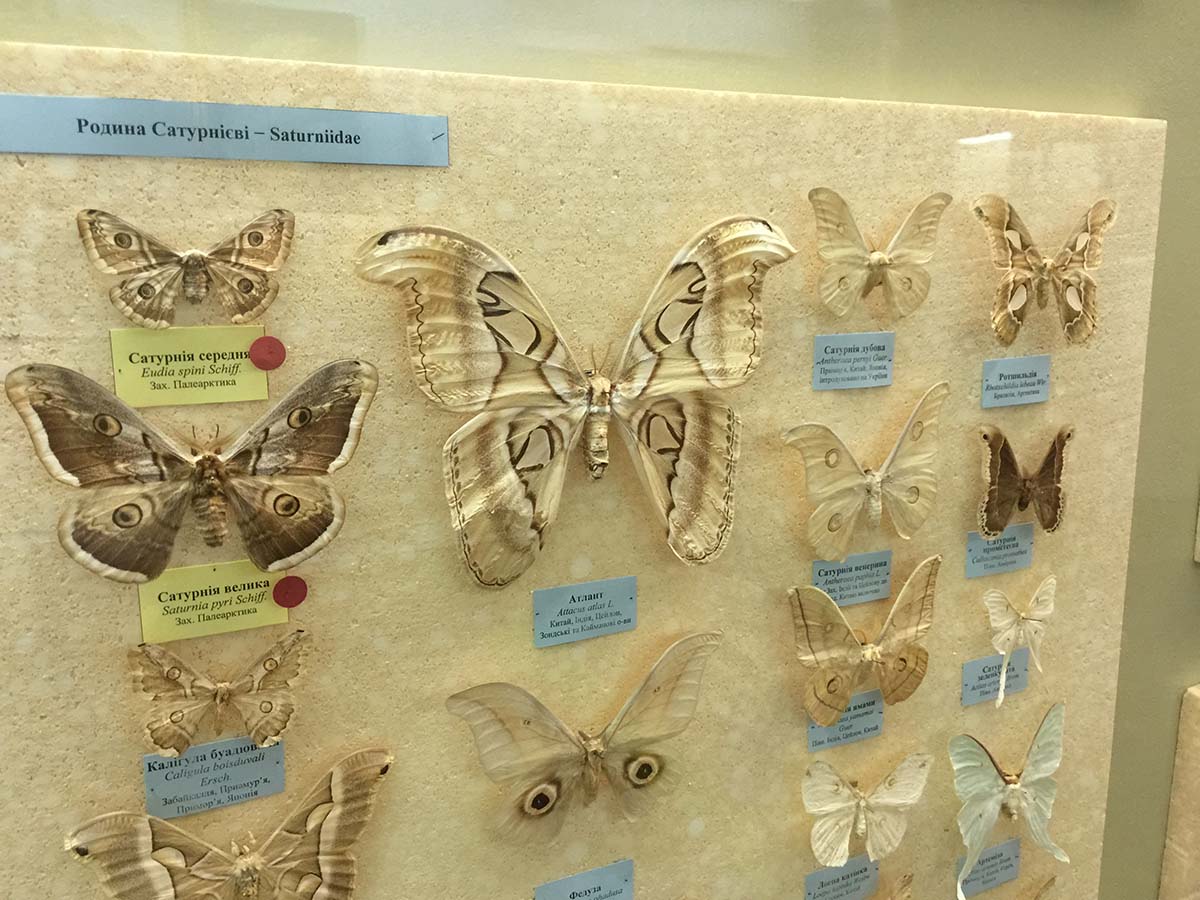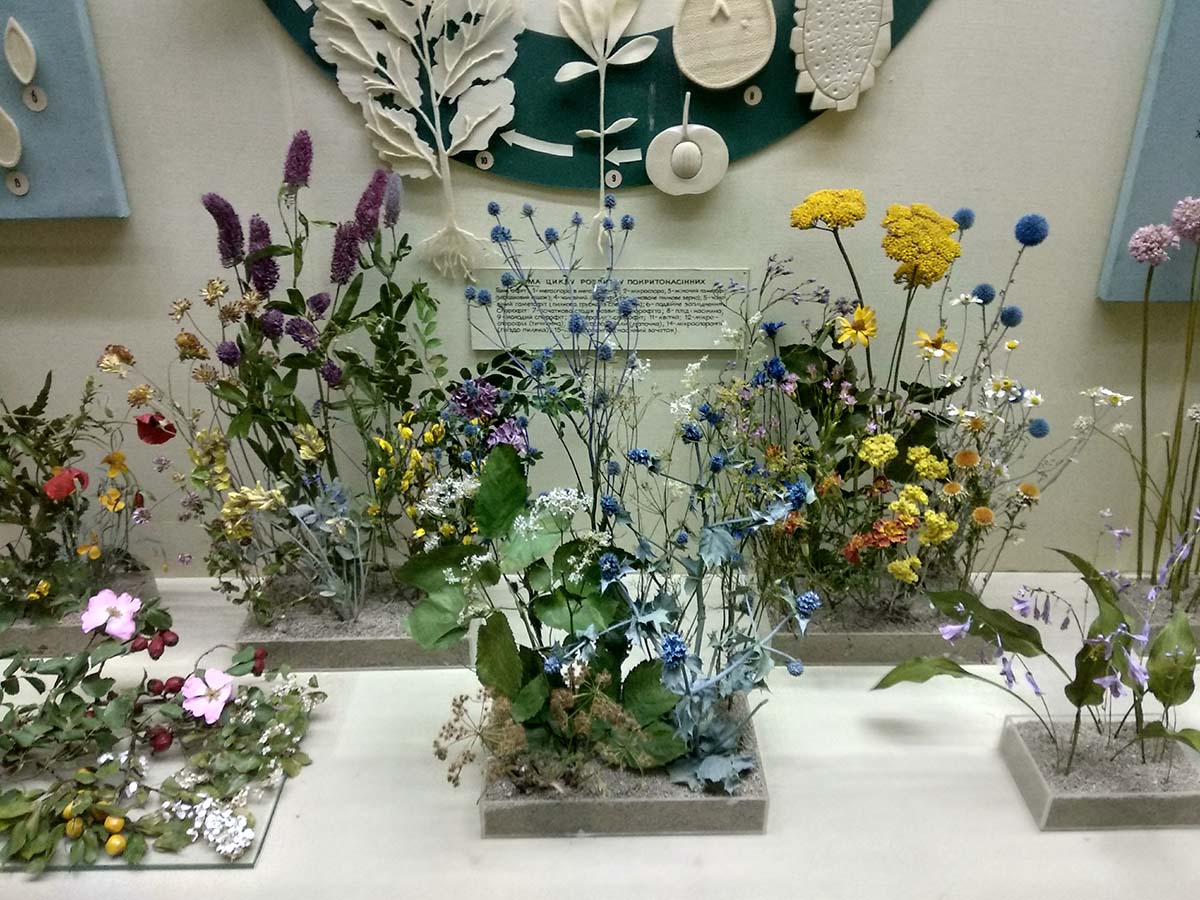It is one of the largest scientific and natural history museums in the world, located next to National Opera of Ukraine. It was created in 1966 as a single exhibition-territorial complex as part of the geological, paleontological, zoological, botanical and archaeological museums. On an area of 8,000 m² in 24 halls, more than 30,000 exhibits are collected, telling about the origin, structure and evolution of the Earth, its flora and fauna, its past and present, the history of the material culture of the tribes and peoples who inhabited the territory of Ukraine. The central place in the museums is occupied by a complex of dioramas – landscape exhibitions and biogroups, the number of which reaches 30.
Geological Museum
It was founded in 1927. The basis of the museum’s funds were collections collected by outstanding geologists P. A. Tutkovsky, N. I. Bezborodko, V. I. Luchnitsky and others. Since 1967, the Geological Museum has been functioning as part of the National Scientific and Natural History Museum. The museum preserves and exhibits over 50,000 specimens of rocks, minerals, fossil fauna and flora. This geological material indicates the material composition of the earth’s crust, the structure, origin, and development of our planet, the complex phenomena and processes that occurred on its surface and in the depths. The museum exhibition is located in 7 halls. The review begins with a stand where meteorites found in Ukraine and Russia are presented. A more complete collection of meteorites is preserved in the funds. In the “General Geological Processes” hall, 22 showcases systematize information and exhibits on internal and external processes that shape the appearance of the Earth and the structure of the lithosphere.
Palaeontological Museum named after V. A. Topachevsky
The history of the paleontological museum is closely connected with the name of academician I. G. Pidoplichko, who in December 1935 created the first small paleontological exhibition in the Zoological Museum. Scientists began collecting a collection of fossil materials for it back at the time of the establishment of the Ukrainian Academy of Sciences in 1919.
N. N. Shcherbak Zoological Museum
It was founded on May 1, 1919 by academician N.F. Kashchenko. The Zoological Museum occupies an entire floor of the museum complex. The museum’s exposition is located in a long gallery and in two large halls – the hall of birds and the hall of mammals. Exhibition materials are only a part of large unique collections stored in the funds. Today, about 5,000 animals belonging to 4,000 species are represented here. The exhibition is built according to a scientific and systematic plan; its characteristic feature is the presence of landscape dioramas that recreate most of the natural areas of the world.
Botanical Museum named after D. N. Dobrochaeva
The Botanical Museum was founded by the Ukrainian Academy of Sciences in 1921. The scientific team of the Botanical Museum, under the leadership of Professor D. N. Dobrochaeva, developed and implemented scientific and exhibition principles, as well as the foundations for creating a completely conceptually new Botanical Museum. In 5 large halls of the museum on a total area of 1400 m², in 109 showcases, 10 biogroups, 8 volumetric large-format dioramas, on 20 panels and 100 friezes, there are exhibitions: “Main groups of the plant world”, “Cellular structure and morphology of flowering plants”, “System and evolution” flower plants”, “Plants in human life”, “Nature conservation”, “Flora world of Ukraine”, “Flora world of Eurasia”, “Flora world of the globe”.
Archaeological Museum
The Archaeological Museum of the Institute of Archeology of the National Academy of Sciences of Ukraine was created in 1966. In 4 halls of the museum with an area of 500 m², over 7,000 original exhibits are collected, stone tools, materials of Trypillian culture, a collection of antiquities from the ancient cities of the Southern Black Sea region, old Russian cities: Kiev, Voinya, Chuchina, tools from the Korolev site in Transcarpathia, which is over age 800,000 years. These exhibits characterize the main stages in the history of human development (about 1,000,000 years ago): Stone Age, Chalcolithic-Bronze Age, Early Iron Age, Middle Ages.
Where is the National Scientific and Natural History Museum of the National Academy of Sciences of Ukraine?
Bogdana Khmelnitsky Street, 15
(044)-235-62-66
Mon, Tue – closed
Wed-Fri – 10:00 – 17:00
Sat-Sun – 11:00 – 18:00
first Wednesday of the month – free entry from 10:00 to 13:00

